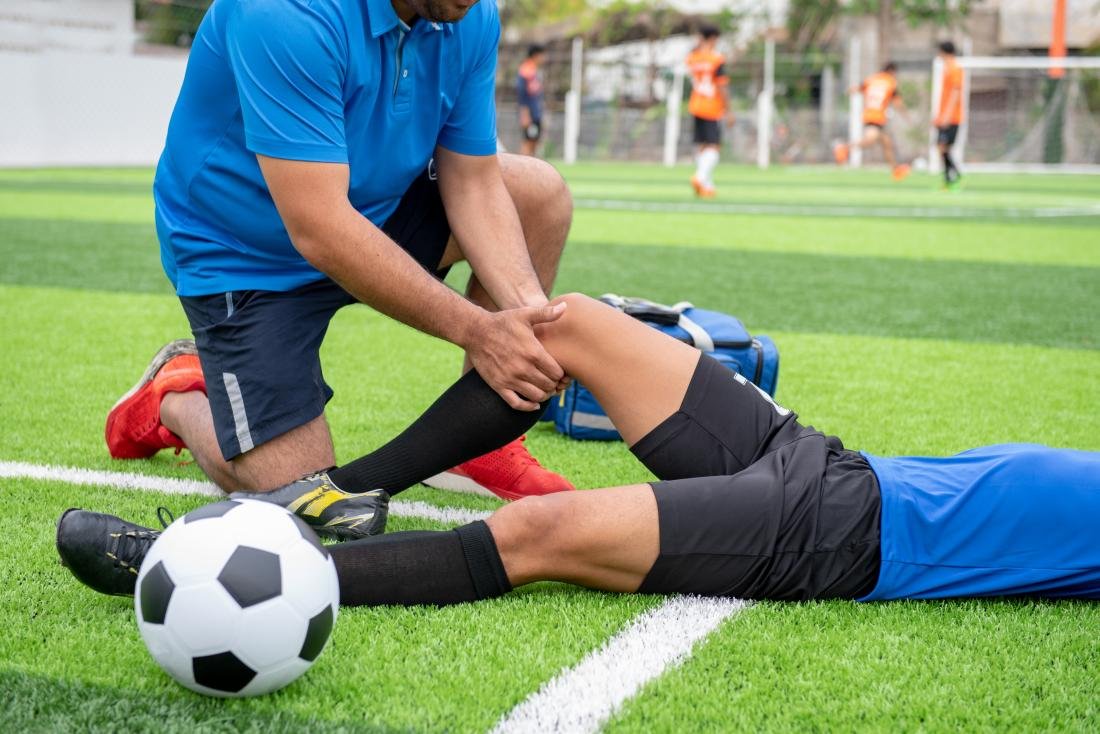Injuries in Knee Ligaments
Did you know?
Australia has the highest incidence in the world of ACL injuries. This is thought to be due to the common sports we play, our climate and grass types.
A ligament is a dense thick tissue composing of collagen fibers. The primary purpose of a ligament is to connect one bone to another, providing crucial stability to joints. In the case of the knee joint, there are four primary ligaments: the anterior and posterior cruciate ligaments situated within the joint, and the medial and lateral collateral ligaments positioned outside of the joint.
The knee ligaments can be injured when stretched suddenly and depending on the number of collagen fibres damaged can result in a partial ligament injury (called a Grade 1 or 2 sprain or tear) or complete ligament rupture (Grade 3).
Symptoms depend on the exact ligament torn and the severity of the injury, but are usually associated with localised pain, bruising and reduced movement. Injured ligaments can also present with a ‘pop’ or tearing noise, swelling and a feeling of giving way or instability when walking.
A special test performed by a Physiotherapist testing the integrity of Knee structures. These are usually done to test the integrity of a specific knee structure which is suspected to be injured.
-
The most common and serious knee ligament injuries include those to the anterior cruciate ligament (ACL) and the medial collateral ligament (MCL).
Anterior cruciate ligament (ACL) injuries
An ACL injury usually occurs during cutting or twisting movements, sudden stopping, or incorrect landing from a jump (all called ‘non-contact’ ACL injuries). These movements most commonly occur in sports such as netball, football, basketball, soccer and gymnastics. Less frequently, the ACL can be injured during a tackle or collision with another player (contact ACL injury) or an awkward fall while skiing. ACL injuries usually happen when the athlete’s foot is in contact with the ground and their knee is suddenly forced backwards, or when the knee is slightly bent and collapses inwards.
Young females and people with a family history of ACL injures are statistically at a higher risk of an ACL injury.
Medial collateral ligament (MCL) injuries
The MCL is damaged when the lower leg (tibia) is stretched outwards, causing the knee ligaments on the inner aspect of the knee to tear. MCL injuries commonly occur during an awkward landing, a tackle or fall over another player, during skiing or when a foot or ski gets caught, causing the knee to collapse inwards.
Posterior cruciate ligament (PCL) injuries
Posterior cruciate ligament (PCL) injuries are less common than either ACL or MCL injuries. The PCL may be injured during a fall onto a very bent knee, or via the knee hyperextending if a player lands against the front of the knee, forcing the shin backwards relative to the thigh bone. PCL injuries are commonly associated with cartilage injuries.
-
The symptoms experienced will differ based on the specific knee ligament that is injured and the extent of the injury. When it comes to ACL injuries, they often cause a sudden "pop" or cracking sound at the time of the injury, and initial pain is typically severe. Most individuals find it difficult to continue playing and describe a sensation of instability or wobbliness when walking.
However, in some cases, the pain subsides within a few minutes, allowing people to stand, walk, run, and even return to their activities without experiencing pain or instability. Nevertheless, when they attempt to change direction, the knee may give way. Within a few hours, the knee typically swells up, remains generally painful (especially at the back and outer side of the knee), and restricts full bending and straightening of the joint.
MCL injuries are characterized by tenderness on the inner side of the knee, mild swelling, and limited range of motion. The intensity of these symptoms varies depending on the severity of the ligament injury. In instances of a complete rupture (Grade 3 MCL), there may be a noticeable noise at the time of injury and a feeling of knee instability while walking.
PCL injuries usually result in widespread knee pain, particularly at the back of the knee and calf, but swelling is typically minimal unless other structures are also affected. A thorough examination of your knee by a physiotherapist, general practitioner, or surgeon can help determine which ligament or combination of ligaments are injured, assess the severity of the injury, and determine if further imaging is necessary.
-
The rehabilitation programs are tailored according to the specific ligament that has been damaged, the severity of the damage, and the sport you intend to resume. To enhance your recovery, it is essential to diligently perform the exercises prescribed specifically for you by your physiotherapist or surgeon.
Moreover, it is crucial to follow the recovery advice provided by your physiotherapist or surgeon, including resting and applying ice to your knee. Additionally, you should be cautious of twisting movements that could strain the healing ligament.
-
The APTUS Knee Therapy brace is designed with supportive structures which offload the high intensity pressures on the knee during sports.
The Therapy Brace is engineered to fit anatomically onto the delicate structures of your knee and with a sturdy fit, it provides a comfort and support during sporting activities.
If you experience any of the following symptoms you must seek professional medical advice from your doctor: night pain, difficulty sleeping, rapid weight change, gradual onset and worsening on pain. If you experience back pain combined with reduced sensation, weakness in lower body muscle groups you must also follow up with your medical health professional.
Disclaimer: This article serves as a general guide you must always consult a medical professional regarding treatment for all injuries and pain.




